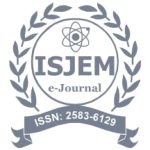Categorization and evaluation of orbital weld bead data incorporating Machine Learning techniques
- Version
- Download 68
- File Size 401.49 KB
- File Count 1
- Create Date 18 April 2025
- Last Updated 18 April 2025
Categorization and evaluation of orbital weld bead data incorporating Machine Learning techniques
Authors:
Mr. R. Hariharan1*, Dr.T.Senthilkumar2, Dr.M.Chandrasekar3 Dr.M.Arulmozhi4, Dr.S.Siddharth5
1*Research Scholar, University College of Engineering, BIT Campus, Anna University Tiruchirappalli
2Professor & Dean, Department of Automobile Engineering, University College of Engineering, BIT Campus, Anna University Tiruchirappalli
3Assistant Professor, Department of Mechanical Engineering, University College of Engineering, BIT Campus, Anna University Tiruchirappalli
4Professor, Department of Petrochemical Technology, University College of Engineering, BIT Campus, Anna University Tiruchirappalli
5Associate Professor, Department of Mechanical Engineering, PSN College of Engineering & Technology, Tirunelveli
Abstract - The classification and evaluation of orbital weld bead data using Machine Learning techniques provides a novel way to enhancing weld quality assessment processes. In this study, the random forest machine learning method was used to categorize weld quality using digital pictures of weld beads from 50 samples. The random forest model was trained utilizing essential picture elements to distinguish between acceptable and unsatisfactory weld quality, allowing for accurate categorization. The model's performance was evaluated using three categorization indicators: classification accuracy, F1-score, and the area under the receiver operating characteristic (ROC) curve (AUC). The RF model has a classification accuracy of 93.5%, an F1-score of 92.8%, and an AUC of 0.96, indicating its great dependability and robustness in determining weld bead quality. Feature selection and hyperparameter optimization improved the model's capacity to distinguish between high-quality and faulty welds. This work highlights the possibility for incorporating machine learning techniques, notably the random forest algorithm, into automated weld quality evaluation systems. The random forest model's great performance in categorizing weld quality demonstrates its usefulness in industrial settings, providing a path to increased efficiency and precision in defect identification and quality assurance procedures.
Key Words: random forest, hyperparameters, machine learning, categorization, feature selection
Download
